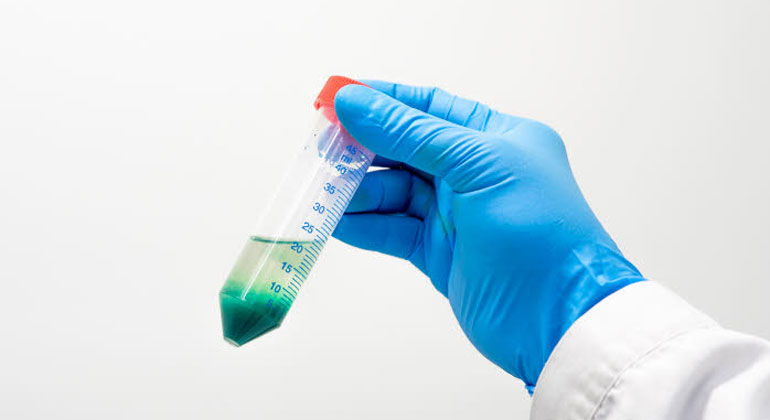New method for recycling lithium-ion batteries reduces energy needs and environmental harm
Researchers at Linnaeus University have developed a more environmentally friendly way of retrieving cobalt from used lithium-ion batteries. With a liquid solvent made of readily available substances, derived from urine and acetic acid, over 97 percent of the cobalt can be recovered. The researchers see good potential for large-scale application.
Increased demand for lithium-ion batteries in combination with the limited availability of the metals such as cobalt needed to produce said batteries, drives the need for efficient methods for battery recycling.
Cobalt is one of the main components of modern lithium-ion batteries, which are widely used in electric vehicles and smartphones. Demand for cobalt is strong and only expected to increase in coming years. Still, only a fraction of discarded batteries is today recycled.
“Today’s methods for recycling cobalt from batteries come with many drawbacks. They require significant amounts of energy and create biproducts that are dangerous for both humans and the environment. With more efficient and environmentally friendly methods, we can reuse a very significant portion of the cobalt that is already in use, instead of mining”, says Ian Nicholls, professor of chemistry at Linnaeus University.
Greener battery recycling
A new method for recycling cobalt developed by Ian Nicholls’ research group moves us towards a greener battery industry. The method addresses two major problems with current recycling: high energy costs and dangerous waste.
The method involves dissolving the lithium cobalt oxide, a substance used in modern lithium-ion batteries, using a liquid solvent, that separates the cobalt, which can subsequently be used for fabricating new batteries.
“The solvent is a combination of two readily available substances: a simple derivate of urea, which is naturally occurring in urine, and acetamide, which can easily be retrieved from acetic acid”, explains Subramanian Suriyanarayanan, one of the researchers behind the solvent that Linnaeus University has researched since 2013.
Requires less energy
The main benefit of the new solvent, compared to widely used methods for recycling cobalt, is that the process can take place at much lower temperatures.
“In our case, the reaction is as most efficient at 180 degrees Celsius. That makes our method much more energy efficient than today’s commercial options, such as pyrometallurgy, which require extreme temperatures, often exceeding 1400 degrees,” says Ian Nicholls.
Can work at large scale
The researchers have extracted over 97 percent of the cobalt from pieces of lithium cobalt oxide that has spent two days in the heated solvent.
The raw cobalt has then been used to produce new batteries, which in turn have been recycled with maintained effect. New batteries have been constructed in collaboration with researchers at Indian Institute of Technology in Madras, India.
The researchers at Linnaeus University see the results as a step towards greener battery production.
“The combination of readily available and relatively harmless substances and high energy efficacy gives our method potential to work for large scale extraction”, says Ian Nicholls.
- Read the article: ”Highly Efficient Recovery and Recycling of Cobalt from Spent Lithium–Ion Batteries Using an N-Methylurea–Acetamide Nonionnic Deep Eutectic Solvent” published in ACS Omega.
- Learn more about Linnaeus University’s research on materials for the future in Linnaeus Knowledge Environment: Advanced materials.
Recycling of lithium-ion batteries

Lithium and cobalt mining are associated with environmental hazards and questionable working conditions. With better methods for recycling current metals, our use of these rare earth elements can be more sustainable. At the time being, however, it is difficult to recycle cobalt in a cost-efficient and safe way. As a result, most spent batteries are stockpiled or incinerated.
There are three main methods for recycling rare earth metals from batteries: pyrometallurgy, hydrometallurgy, and biometallurgy. Each way has pros and cons and can be used on their own or in combination.
- Pyrometallurgy involves separating metals at very high temperatures, often above 1400 degrees Celsius. It is the most developed method, but it comes with high energy costs and the generation of harmful gases.
- In hydrometallurgy, metals are retrieved using chemical solvents. The method involves less of a risk for harmful gases, but generally demands highly dangerous chemical compounds in large quantities.
- Biometallurgy uses bacteria to separate metals from each other, but the process generally demands additional substances to accelerate the reaction. Its drawbacks include efficiency, costs, and environmental risks.








